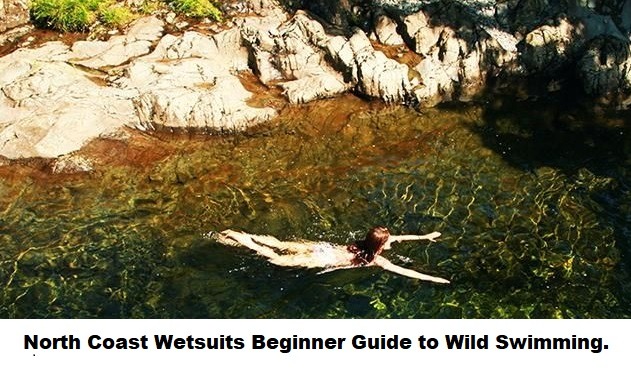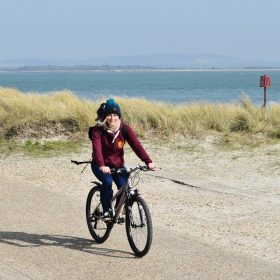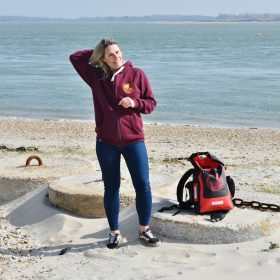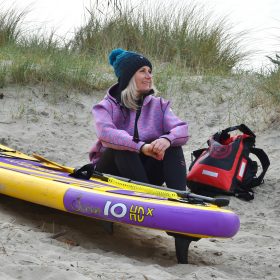Wild swimming is perhaps the easiest and purest way to enjoy the outdoor immersive experience. All that’s needed is yourself and a body of water to dive into. Close to the Rubber Shack we have all manner of wild swimming spots with Mrs NCW regularly taking a dip. If you’re thinking about a spot of wild swimming then here are a few things to consider.
Why wild swim?
Wild swimming has exploded in popularity over the past few years – in particular through 2020 and into 2021. The health benefits of cold water immersion (think Wim Hof Method) are widely promoted.
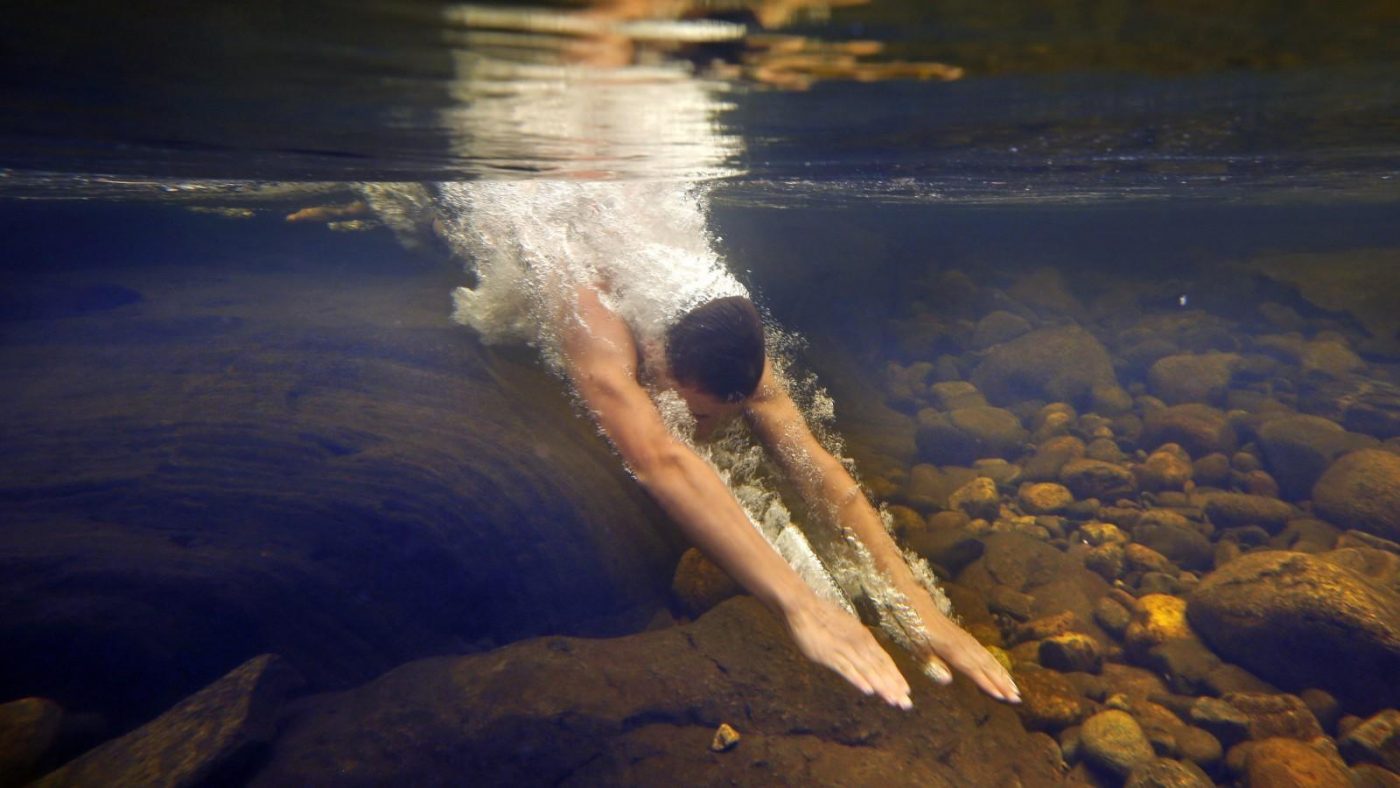
One benefit of plunging into cold water (along with an alkaline based diet) is counteracting muscle inflammation and promotion of joint relaxation. There are plenty of other reasons to wild swim but these are just two.
Wild swimmming location choices.
Where you swim is extremely important. For most a placid, calm stretch of water is best. Some do enjoy battling the surf but this isn’t the majority. Open and exposed beaches with waves surging towards the beach aren’t going to be the best locations 90% of the time. As we head deeper into summer, however, there’s more chance of flatter spells that make these locations doable.
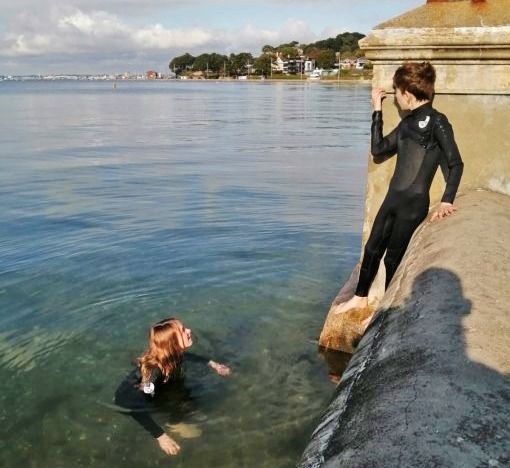
For those wild swimming inland, you have a plethora of get in options: from lakes to rivers, canals and lochs, there’s plenty of choice. As with coastal venues make sure you’re aware of and avoid hazards. Rivers with fast flow, for instance, aren’t a good idea. And be sure to keep an eye on things like blue green algae that can appear in high season.
Sheltered spots such as coves, inlets and harbours are more appealing for wild swimming. Just make sure you’re aware of the dangers, such as strong tides in estuaries, boating traffic and fishing. Stay safe above all else.
Wild swim clothing.
There are two schools of thought on what to wear when you swim in the wild. Some suggest all you need is a beanie on the chilliest of days and only a swimming cozy the rest of the time. Quite a few locations, however, are quite harsh on feet so a pair of wetsuit booties or shoes would be a good idea even if you’re just in your birthday suit.
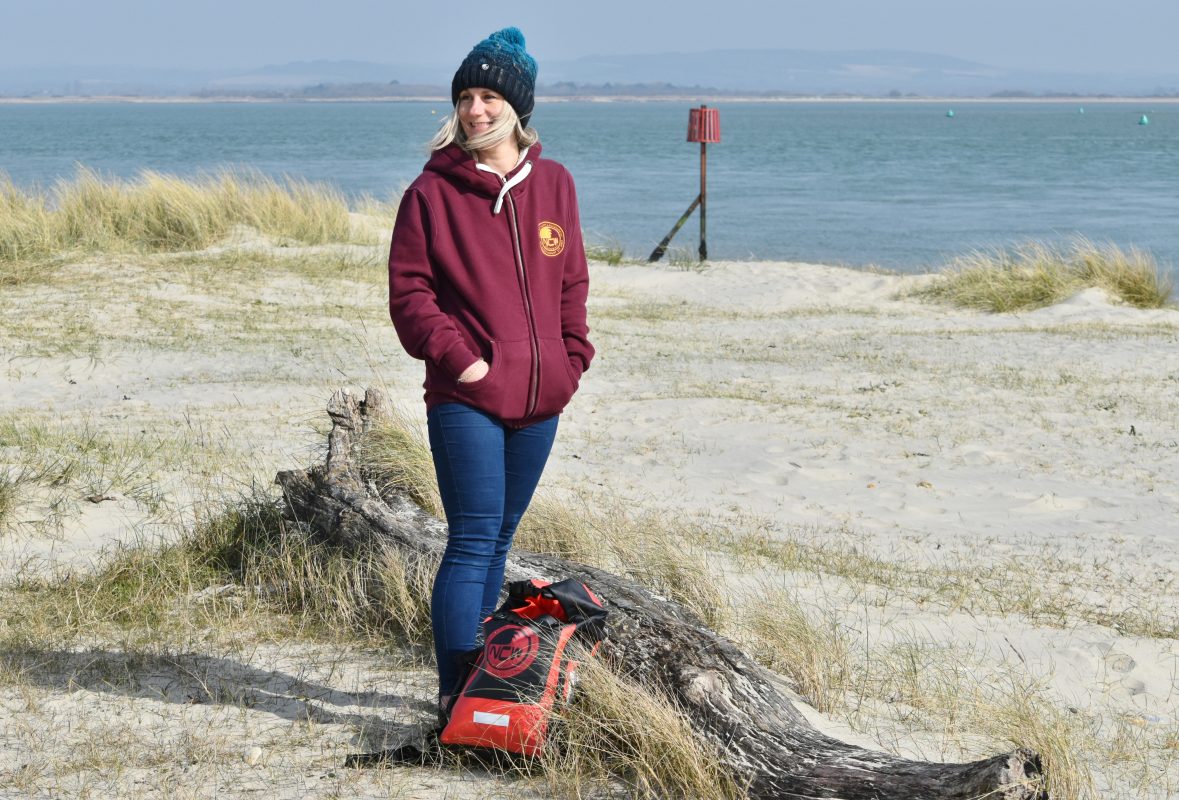
North Coast Wetsuits Sherpa fleece lined hoodie (Dusty Black, French Navy & Maroon)
Check out NCW’s lovely snug and warm peach finish Sherpa fleece unisex hoodie which is embroidered, locally in Cornwall, we might add, with NCW’s logo on the chest and North Coast Wetsuits on the back side panel. Plus our neat little hem tag with tiny logo on the front base hem.
These hoodies are ‘proper’ warm, as we say in Cornwall. Half Sherpa lined means a fully insulated hood and all inside front panels. Both pockets have internal pouch/phone holders built in for extra security and the cuffs feature thumb holes for additional heat sealing.
Colour options with contrasting embroidery are:
Maroon with Deep Gold; French Navy with Electric Blue; Dusty Black with Silver
These are high quality hoodies and won’t disappoint! (Fabric content: 65% cotton/35% polyester).
|
Size |
Size Info |
|---|---|
|
XS |
To fit to 35” chest (teens) |
|
S |
To fit to 37″ chest |
|
M |
To fit to 40″ chest |
|
L |
To fit to 43″ chest |
|
XL |
To fit to 46″ chest |
|
2XL |
To fit to 50″ chest |
Want to read our fair returns policy first?
For other wild swimmers a wetsuit is a must. NCW’s published articles about the reasons to steer clear of triathlete suits as these tend to rip and tear easily. A 3mm (or even 5mm for winter wild swimming) will be more than applicable.
Don’t forget your post-wild swim clothing as well. A toweling robe and warm fleece hoody plus beanie will all be most welcome after a freezing cold dip in the brine. Also, a hot beverage of choice, such as tea or coffee will be most welcome.
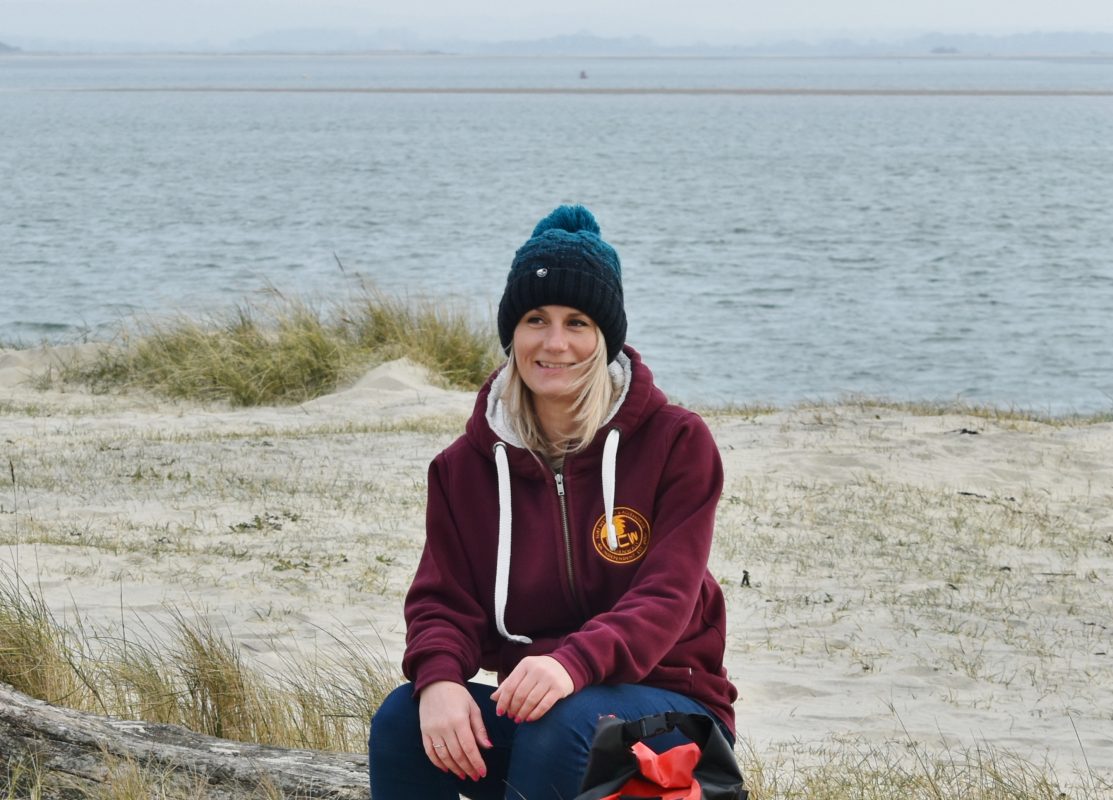
NCW Sherpa fleece beanie / bobble hat . Lots of colours available click for full range
Check our Uber warm Sherpa fleece lined bobble hat. Toasty!
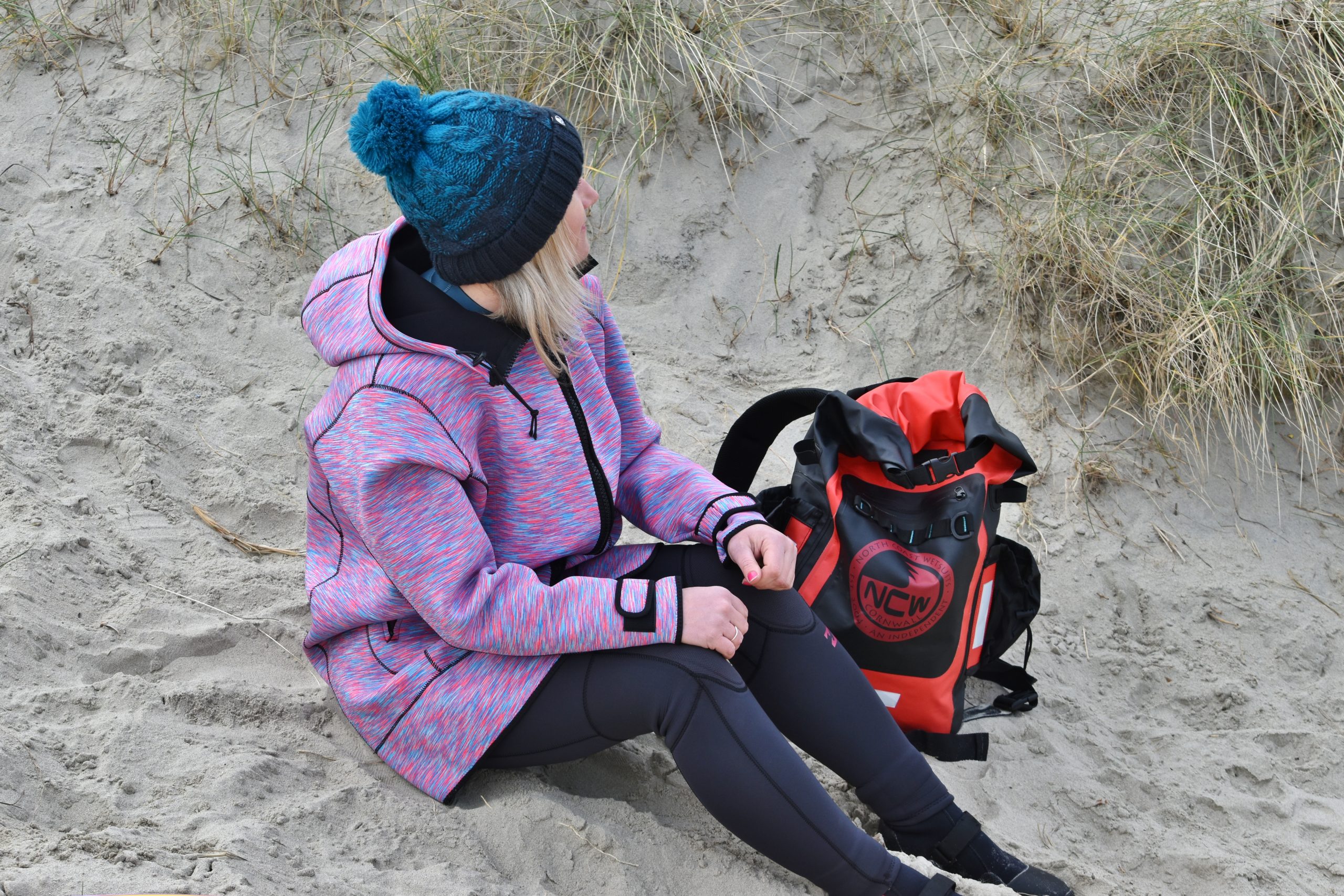
100% soft touch acrylic with fleece lining for extra warmth. Made with heavy multi yarn cable knit and a cuffed rim bearing our logo.
For cold weather or when warming up post-water session these beanies are a great addition to your wardrobe and watersports kit box.
Want to read our fair returns policy first?Wild swim safety.
Wild swimming is just that: out in the wild rather than within the confines of a swimming pool. But then that’s part of the appeal. You do have to keep safety in mind, however…
As stated at the beginning of this article you should avoid heavily tidal waters and stretches with strong flow. Other hazards such as lots of boating traffic need to be considered. A busy harbour or port isn’t the wisest choice of venue for your wild swimming antics. Large vessels obscure views of tiny swimming bodies. The pilots of these craft mightn’t be able to pick you out among the flotsam. Best just to keep clear.
Wildlife and marine life can also be problems for wild swimmers so be aware. In particular, some species are protected so don’t go near. And keep in mind getting too cold. It’s all well and good wanting to be hardy but hypothermia can set in quickly. Swim with a group for additional safety and keep an eye on one another.

Cold hands in the water ? GET MERINO WOOL WARM WETSUIT GLOVE LINERS FOR YOUR WETSUIT GLOVES
Cold hands in the water ? GET MERINO WOOL WARM WETSUIT GLOVES LINERS
PATENTED liners add SIGNIFICANT warmth – these work with all wetsuit gloves.
Features include :
Made from Pinnacle’s patented 260 Gram Merino lining.
Designed for specifically for wetsuit glove use.
Adds SIGNIFICANT warmth to ANY wetsuit glove.
Can also be worn under any type of glove, wet or dry or even with other outdoor gloves for extra warmth.
Five sizes available. These do have plenty of stretchy so size isn’t too critical. If you measure your centre finger, from the finger tip (top) to the base (bottom) where it meets your palm you will get a measurement that you can use on the chart below.
Extra Small – older kids (13+) and folks with fingers less than 7cm in length
Small – guys with very small hands and ladies with smaller hands
(centre finger 7 – 8cm).
Medium – fits guys with smaller hands and most ladies
(centre finger 8 to 8.5cm).
Large – fits most guys and ladies with larger hands
(centre finger 8.5 – 9.5cm).
XL – fits guys with big hands
(centre finger 9.5cm plus).
Have a contingency plan should your wild swimming go awry. Particularly, a way to attract attention and/or call for emergency assistance is worth gold. A cheap mobile phone in a waterproof pouch, for instance, is a good idea.
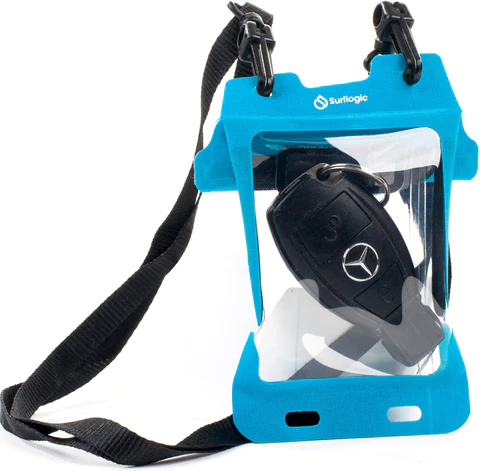
Waterproof Electronic Key Bag / Pouch rate IPX8 100% waterproof
For those of you with electronic remote locking cars, this item is a must. No more leaving your key behind your car wheel!
100 % Waterproof Key Pouch For Electronic Car Key – Take Your Key For A Surf Now
• Made from tough EVA material and ultra-sound welded.
• IPX 8 rating – suitable for constant under water submersion for 30 minutes up to 3 meter seep
• Dimension: internal 9cm x 7cm approx. – great for electronic car keys
• Keeps out dust, sand, dirt and water too
• Has built in neck cord
• Ideal for surfing, kayaking, water skiing, snorkelling, fishing plus other outdoor sports.
Don’t trust your expensive key in a cheap one. Take your key surfing with you now – don’t hide it in the sand or behind your car wheel anymore ! This is a very high quality item, laboratory tested too.
Want to read our fair returns policy first?We’re big fans of wild swimming here at NCW and wholeheartedly encourage it. As long as you swim safely and responsibly there’s no end to the enjoyment you can have.
Don’t forget to check out our Wild Swimming Knowledge page for more –

